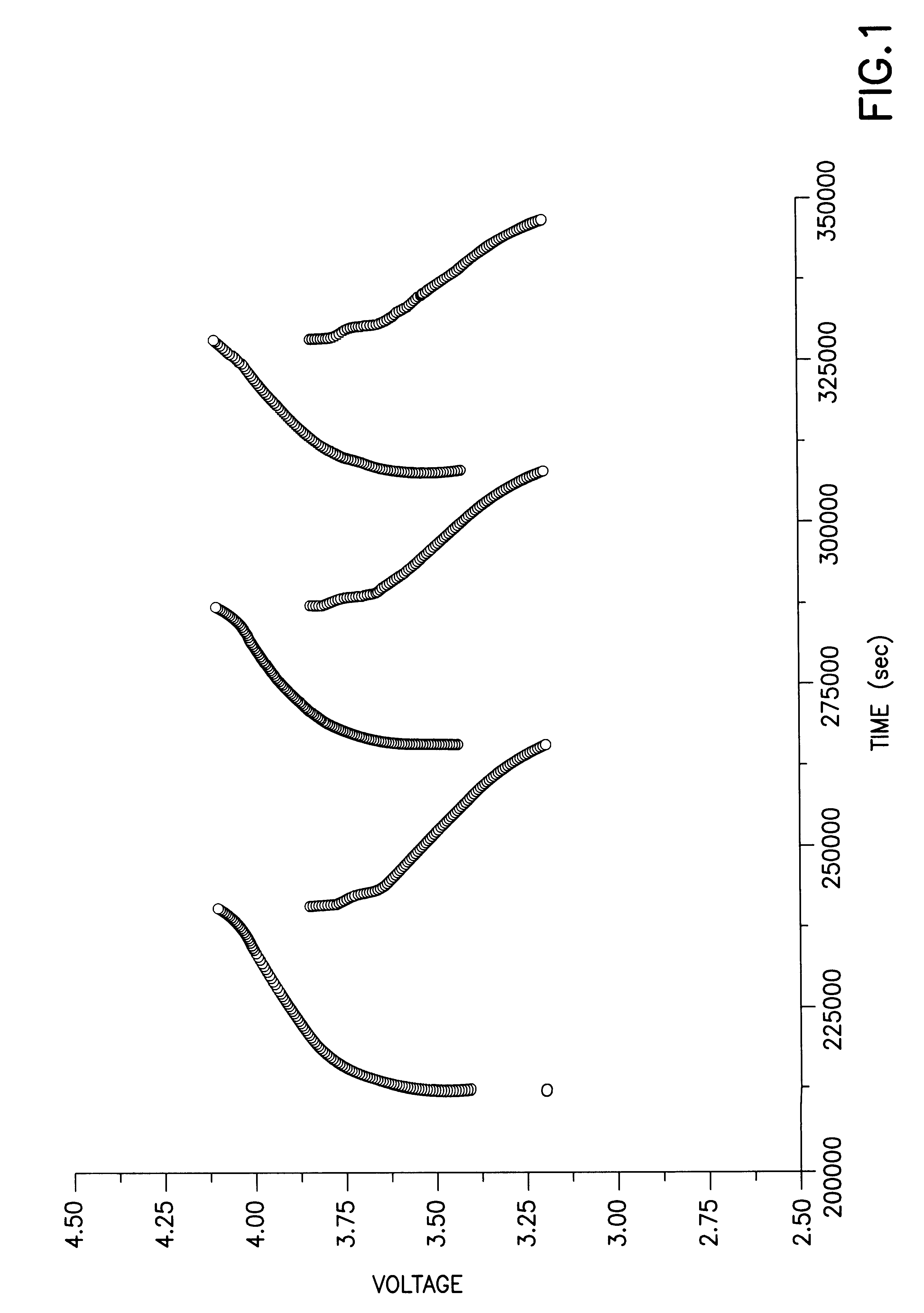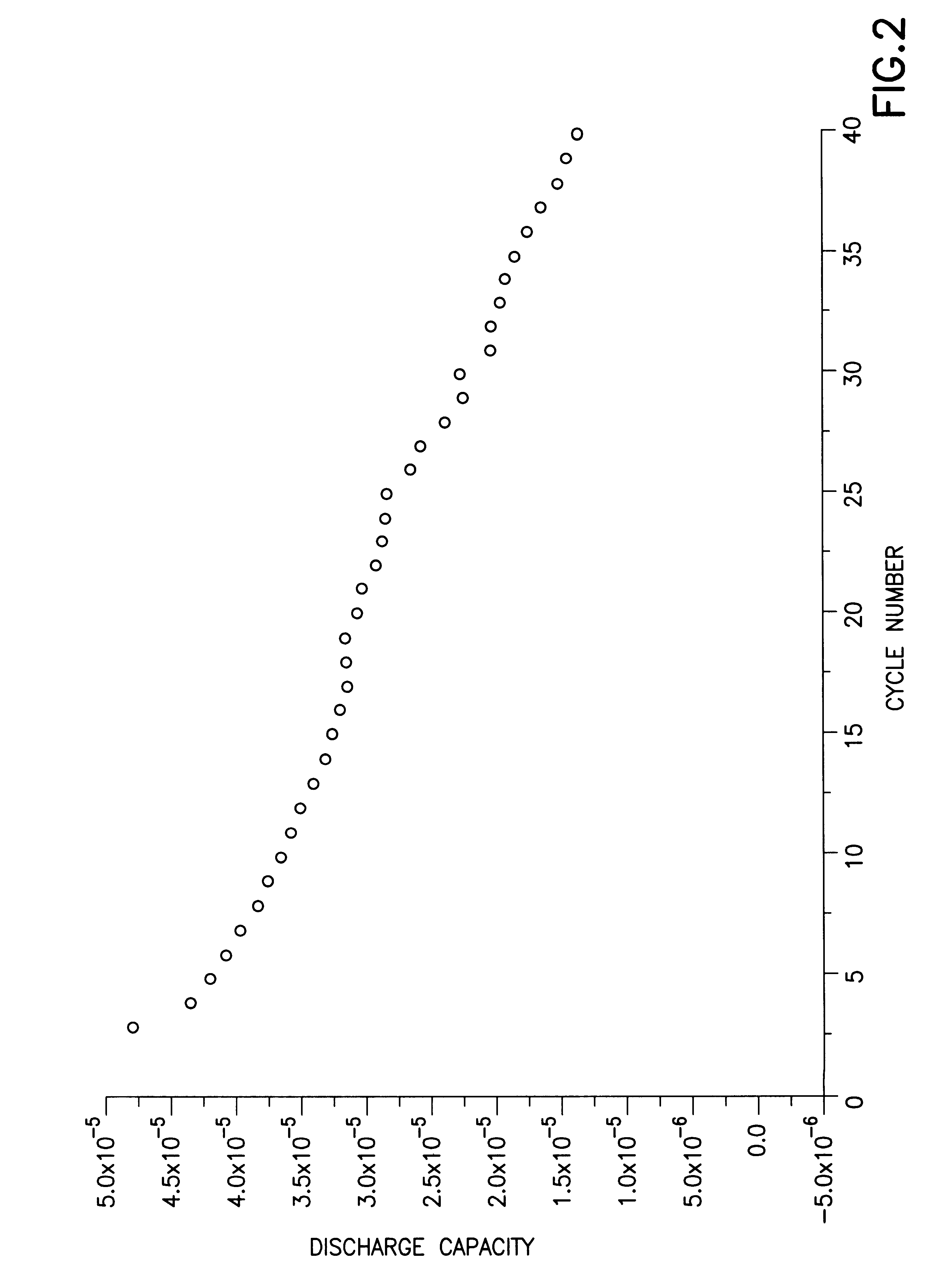Solid electrolyte for an electrochemical cell composed of an inorganic metal oxide network encapsulating a liquid electrolyte
a liquid electrolyte and solid electrolyte technology, applied in the field of solid polymer electrolyte and to an electrochemical cell, can solve the problems of leakage and degradation, poor ionic conductivity of these polymer electrolyte at room temperature, and high volatility of liquid electroly
- Summary
- Abstract
- Description
- Claims
- Application Information
AI Technical Summary
Benefits of technology
Problems solved by technology
Method used
Image
Examples
Embodiment Construction
The following example will serve to further illustrate the practice of the invention.
A rechargeable lithium ion electrochemical cell was fabricated using a carbon anode, a LiCoO.sub.2 cathode and a solid polymer electrolyte prepared by the sol-gel process and containing as a metal salt lithium bisperfluoroethanesulfonimide (LiN(SO.sub.2 C.sub.2 F.sub.5).sub.2). The cell employed a conventional glass fiber separator between the carbon anode and the LiCoO.sub.2 cathode. The liquid precursor to the solid polymer was prepared as follows: To a silicon alkoxide, namely, tetramethylorthosilicate (TMOS), was added twice as many moles of water and a catalytic amount (less than two equivalents) of 0.05M HCl. This mixture was mixed in a container for about fifteen minutes. In a separate container, a solution was formed of the lithium containing salt, namely, lithium bisperfluoroethanesulfonimide, in a carbonate containing solvent, i.e., a mixture of ethylene carbonate and diethylcarbonate. Equ...
PUM
| Property | Measurement | Unit |
|---|---|---|
| temperature | aaaaa | aaaaa |
| temperatures | aaaaa | aaaaa |
| temperatures | aaaaa | aaaaa |
Abstract
Description
Claims
Application Information
 Login to View More
Login to View More - R&D
- Intellectual Property
- Life Sciences
- Materials
- Tech Scout
- Unparalleled Data Quality
- Higher Quality Content
- 60% Fewer Hallucinations
Browse by: Latest US Patents, China's latest patents, Technical Efficacy Thesaurus, Application Domain, Technology Topic, Popular Technical Reports.
© 2025 PatSnap. All rights reserved.Legal|Privacy policy|Modern Slavery Act Transparency Statement|Sitemap|About US| Contact US: help@patsnap.com


